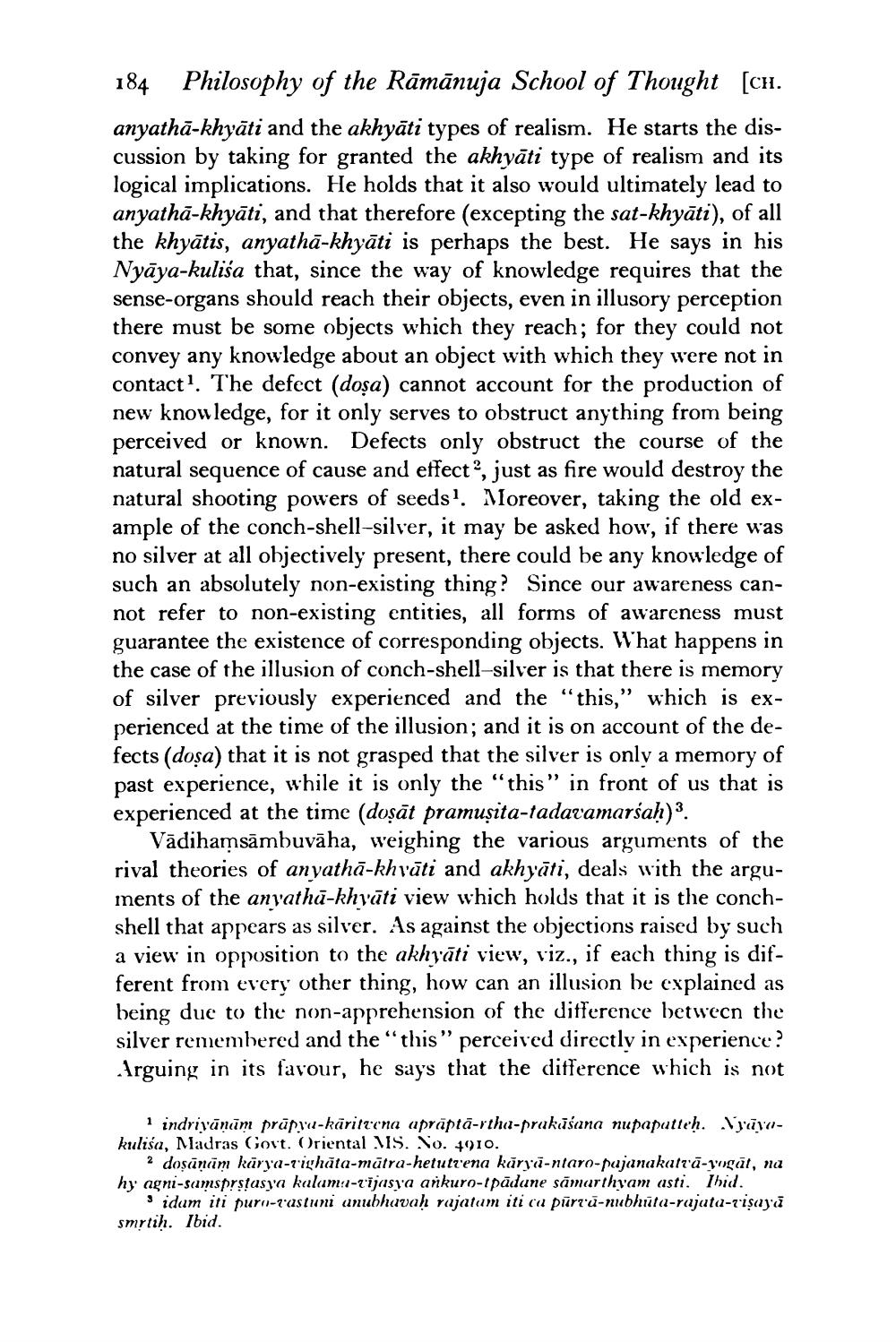________________
184 Philosophy of the Rāmānuja School of Thought [CH. anyathā-khyāti and the akhyāti types of realism. He starts the discussion by taking for granted the akhyāti type of realism and its logical implications. He holds that it also would ultimately lead to anyathā-khyāti, and that therefore (excepting the sat-khyāti), of all the khyātis, anyathā-khyāti is perhaps the best. He says in his Nyāya-kulisa that, since the way of knowledge requires that the sense-organs should reach their objects, even in illusory perception there must be some objects which they reach; for they could not convey any knowledge about an object with which they were not in contact". The defect (dosa) cannot account for the production of new knowledge, for it only serves to obstruct anything from being perceived or known. Defects only obstruct the course of the natural sequence of cause and effect?, just as fire would destroy the natural shooting powers of seeds!. Moreover, taking the old example of the conch-shell-silver, it may be asked how, if there was no silver at all objectively present, there could be any knowledge of such an absolutely non-existing thing? Since our awareness cannot refer to non-existing entities, all forms of awareness must guarantee the existence of corresponding objects. What happens in the case of the illusion of conch-shell-silver is that there is memory of silver previously experienced and the "this,” which is experienced at the time of the illusion; and it is on account of the defects (doșa) that it is not grasped that the silver is only a memory of past experience, while it is only the "this" in front of us that is experienced at the time (doşāt pramuşita-tadaramarśaḥ)?
Vādihamsāmbuvāha, weighing the various arguments of the rival theories of anyatha-khvūti and akhyāti, deals with the arguinents of the anyathā-khyāti view which holds that it is the conchshell that appears as silver. As against the objections raised by such a view in opposition to the akhyāti view, viz., if each thing is different from every other thing, how can an illusion be explained as being due to the non-apprehension of the difference between the silver remembered and the "this" perceived directly in experience? Irguing in its favour, he says that the difference which is not
1 indriyānām prāpiu-kārittona aprūptā-rtha-prakıīšana nupaputteh. jayakulisa, Madras Govt. Oriental VS. No. 4910.
2 doșanim karya-righăta-mātra-hetutrena karya-ntaro-pujanakatrā-wagāt, na hy agni-samsprstasya kalama-rijasya ankuro-Ipādane samarthyam asti. Thid.
Sidam iti purn-zastuni unubhavah rajatum iti cu pūrtū-nubhūta-rajata-tişaya smrtih. Ibid.




